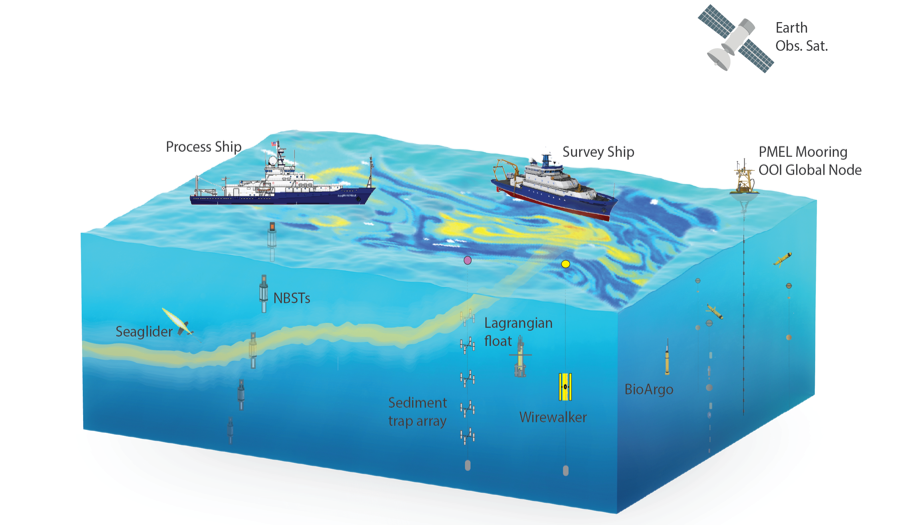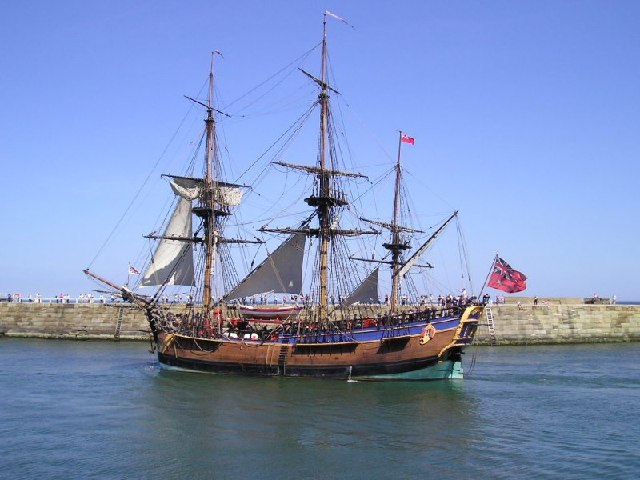Research Vessels on:
[Wikipedia]
[Google]
[Amazon]
 A research vessel (RV or R/V) is a
A research vessel (RV or R/V) is a
 The research ship had origins in the early voyages of exploration. By the time of James Cook's ''Endeavour'', the essentials of what today we would call a research ship are clearly apparent. In 1766, the
The research ship had origins in the early voyages of exploration. By the time of James Cook's ''Endeavour'', the essentials of what today we would call a research ship are clearly apparent. In 1766, the
About Australia’s new icebreaker — RSV ''Nuyina''
Australian Antarctic Division, 29 September 2017. Retrieved 26 February 2021.
OCEANIC International Research Vessels Database
Unofficial (English Language) Homepage of the research icebreaker "ARA Almirante Irizar
Australian research vessel facilities
Alfred Wegener Institute for Polar and Marine Research
– home of the " Polarstern"
Ifremer Fleet
National Institute of Oceanography and Experimental Geophysics – OGS Trieste ITALY
NOAA Marine Operations
Scripps Institution of Oceanography
*
WHOI web page
{{Authority control Ship types Hydrography Fisheries science Oceanographic instrumentation
 A research vessel (RV or R/V) is a
A research vessel (RV or R/V) is a ship
A ship is a large watercraft that travels the world's oceans and other sufficiently deep waterways, carrying cargo or passengers, or in support of specialized missions, such as defense, research, and fishing. Ships are generally distinguishe ...
or boat designed, modified, or equipped to carry out research
Research is "creative and systematic work undertaken to increase the stock of knowledge". It involves the collection, organization and analysis of evidence to increase understanding of a topic, characterized by a particular attentiveness t ...
at sea. Research vessels carry out a number of roles. Some of these roles can be combined into a single vessel but others require a dedicated vessel. Due to the demanding nature of the work, research vessels may be constructed around an icebreaker hull
Hull may refer to:
Structures
* Chassis, of an armored fighting vehicle
* Fuselage, of an aircraft
* Hull (botany), the outer covering of seeds
* Hull (watercraft), the body or frame of a ship
* Submarine hull
Mathematics
* Affine hull, in affi ...
, allowing them to operate in polar waters.
History
 The research ship had origins in the early voyages of exploration. By the time of James Cook's ''Endeavour'', the essentials of what today we would call a research ship are clearly apparent. In 1766, the
The research ship had origins in the early voyages of exploration. By the time of James Cook's ''Endeavour'', the essentials of what today we would call a research ship are clearly apparent. In 1766, the Royal Society
The Royal Society, formally The Royal Society of London for Improving Natural Knowledge, is a learned society and the United Kingdom's national academy of sciences. The society fulfils a number of roles: promoting science and its benefits, r ...
hired Cook to travel to the Pacific Ocean
The Pacific Ocean is the largest and deepest of Earth's five oceanic divisions. It extends from the Arctic Ocean in the north to the Southern Ocean (or, depending on definition, to Antarctica) in the south, and is bounded by the contine ...
to observe and record the transit of Venus across the Sun. The ''Endeavour'' was a sturdy vessel, well designed and equipped for the ordeals she would face, and fitted out with facilities for her "research personnel", Joseph Banks. As is common with contemporary research vessels, ''Endeavour'' also carried out more than one kind of research, including comprehensive hydrographic survey work.
Some other notable early research vessels were HMS ''Beagle'', RV ''Calypso'', HMS ''Challenger'', USFC ''Albatross'', and the ''Endurance'' and ''Terra Nova''.
The names of early research vessels have been used to name later research vessels, as well as Space Shuttles.
Modern types
Hydrographic survey
A hydrographic survey ship is a vessel designed to conduct hydrographic research and survey.Nautical chart
A nautical chart is a graphic representation of a sea area and adjacent coastal regions. Depending on the scale of the chart, it may show depths of water and heights of land ( topographic map), natural features of the seabed, details of the coa ...
s are produced from this information to ensure safe navigation
Navigation is a field of study that focuses on the process of monitoring and controlling the movement of a craft or vehicle from one place to another.Bowditch, 2003:799. The field of navigation includes four general categories: land navigation, ...
by military
A military, also known collectively as armed forces, is a heavily armed, highly organized force primarily intended for warfare. It is typically authorized and maintained by a sovereign state, with its members identifiable by their distin ...
and civilian shipping.
Hydrographic survey vessels also conduct seismic surveys of the seabed and the underlying geology
Geology () is a branch of natural science concerned with Earth and other astronomical objects, the features or rocks of which it is composed, and the processes by which they change over time. Modern geology significantly overlaps all other Ea ...
. Apart from producing the charts, this information is useful for detecting geological features likely to bear oil or gas. These vessels usually mount equipment on a towed structure, for example, air cannons used to generate shock wave
In physics, a shock wave (also spelled shockwave), or shock, is a type of propagating disturbance that moves faster than the local speed of sound in the medium. Like an ordinary wave, a shock wave carries energy and can propagate through a me ...
s that sound strata beneath the seabed, or mounted on the keel, for example, a depth sounder.
In practice, hydrographic survey vessels are often equipped to perform multiple roles. Some function also as oceanographic research ships. Naval hydrographic survey vessels often do naval research, for example, on submarine detection.
An example of a hydrographic survey vessel is CCGS ''Frederick G. Creed''. For an example of the employment of a survey ship see .
Oceanographic research
Oceanographic research vessels carry out research on the physical, chemical, andbiological
Biology is the scientific study of life. It is a natural science with a broad scope but has several unifying themes that tie it together as a single, coherent field. For instance, all organisms are made up of cells that process hereditary ...
characteristics of water
Water (chemical formula ) is an inorganic, transparent, tasteless, odorless, and nearly colorless chemical substance, which is the main constituent of Earth's hydrosphere and the fluids of all known living organisms (in which it acts as ...
, the atmosphere
An atmosphere () is a layer of gas or layers of gases that envelop a planet, and is held in place by the gravity of the planetary body. A planet retains an atmosphere when the gravity is great and the temperature of the atmosphere is low. ...
, and climate
Climate is the long-term weather pattern in an area, typically averaged over 30 years. More rigorously, it is the mean and variability of meteorological variables over a time spanning from months to millions of years. Some of the meteorologica ...
, and to these ends carry equipment for collecting water samples from a range of depths, including the deep seas, as well as equipment for the hydrographic sounding of the seabed, along with numerous other environmental sensors. These vessels often also carry scientific divers and unmanned underwater vehicles. Since the requirements of both oceanographic and hydrographic research are very different from those of fisheries research, these boats often fulfill dual roles. Recent oceanographic research campaigns include GEOTRACES and NAAMES.
Examples of an oceanographic research vessel include the NOAAS ''Ronald H. Brown'' and the Chilean Navy ''Cabo de Hornos
Cape Horn ( es, Cabo de Hornos, ) is the southernmost headland of the Tierra del Fuego archipelago of southern Chile, and is located on the small Hornos Island. Although not the most southerly point of South America (which are the Diego Ra ...
''.
Fisheries research
A fisheries research vessel requires platforms capable of towing different types of fishing nets, collectingplankton
Plankton are the diverse collection of organisms found in water (or air) that are unable to propel themselves against a current (or wind). The individual organisms constituting plankton are called plankters. In the ocean, they provide a cr ...
or water samples from a range of depths, and carrying acoustic fish-finding equipment. Fisheries research vessels are often designed and built along the same lines as a large fishing vessel, but with space given over to laboratories and equipment storage, as opposed to storage of the catch. An example of a fisheries research vessel is FRV ''Scotia''.
Naval research
Naval research vessels investigate naval concerns, such as submarine and mine detection or sonar and weapons trials. An example of a naval research vessel is the ''Planet'' of theGerman Navy
The German Navy (, ) is the navy of Germany and part of the unified '' Bundeswehr'' (Federal Defense), the German Armed Forces. The German Navy was originally known as the ''Bundesmarine'' (Federal Navy) from 1956 to 1995, when ''Deutsche Mar ...
.
Polar research
Polar research vessels are constructed around an icebreaker hull, allowing them to engage in ice navigation and operate in polar waters. These vessels usually have dual roles, particularly in the Antarctic, where they function also as polar replenishment and supply vessels to the Antarctic research bases. Examples of polar research vessels include USCGC ''Polar Star'', RSV ''Aurora Australis'' and RSV ''Nuyina''.Australian Antarctic Division, 29 September 2017. Retrieved 26 February 2021.
Oil exploration
Oil exploration is performed in a number of ways, one of the most common being mobile drilling platforms or ships that are moved from area to area as needed to drill into the seabed to find out what deposits lie beneath it.See also
* European and American voyages of scientific exploration * List of research vessels by country * Marine research vessels * Technical research ship *Weather ship
A weather ship, or ocean station vessel, was a ship stationed in the ocean for surface and upper air meteorological observations for use in weather forecasting. They were primarily located in the north Atlantic and north Pacific oceans, reportin ...
References
Further reading
OCEANIC International Research Vessels Database
Unofficial (English Language) Homepage of the research icebreaker "ARA Almirante Irizar
Australian research vessel facilities
Alfred Wegener Institute for Polar and Marine Research
– home of the " Polarstern"
Ifremer Fleet
National Institute of Oceanography and Experimental Geophysics – OGS Trieste ITALY
NOAA Marine Operations
Scripps Institution of Oceanography
*
Woods Hole Oceanographic Institution
The Woods Hole Oceanographic Institution (WHOI, acronym pronounced ) is a private, nonprofit research and higher education facility dedicated to the study of marine science and engineering.
Established in 1930 in Woods Hole, Massachusetts, i ...
(WHOIWHOI web page
{{Authority control Ship types Hydrography Fisheries science Oceanographic instrumentation